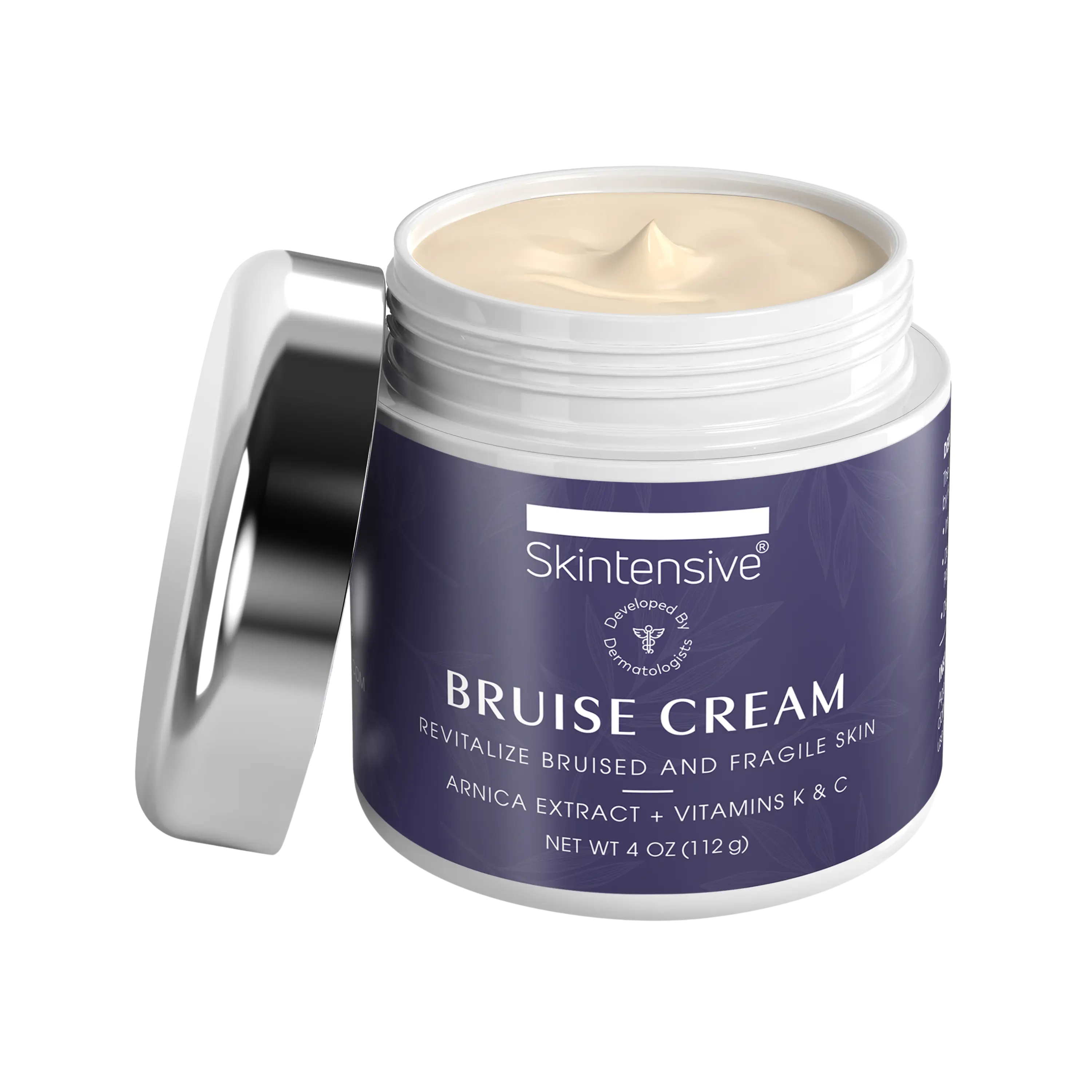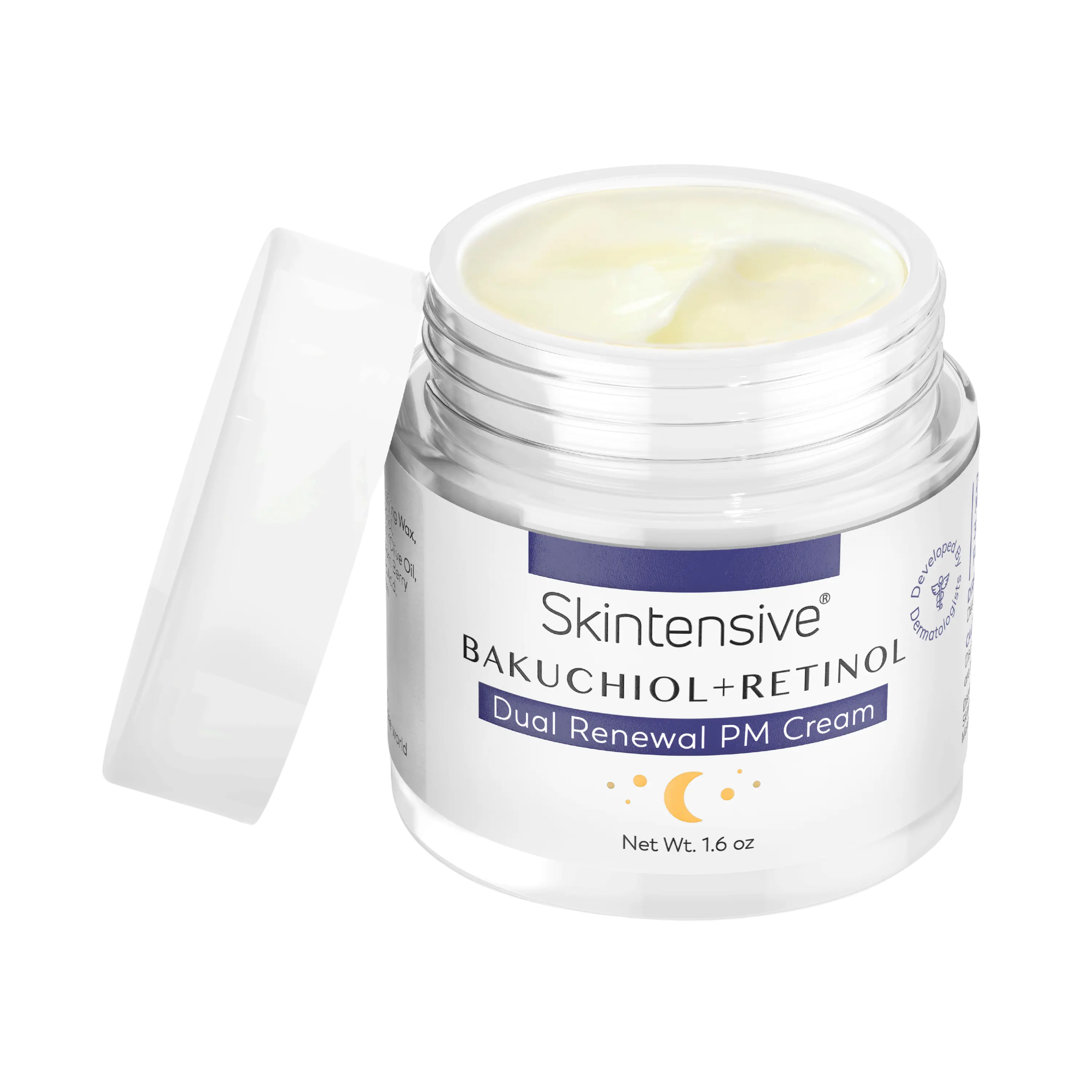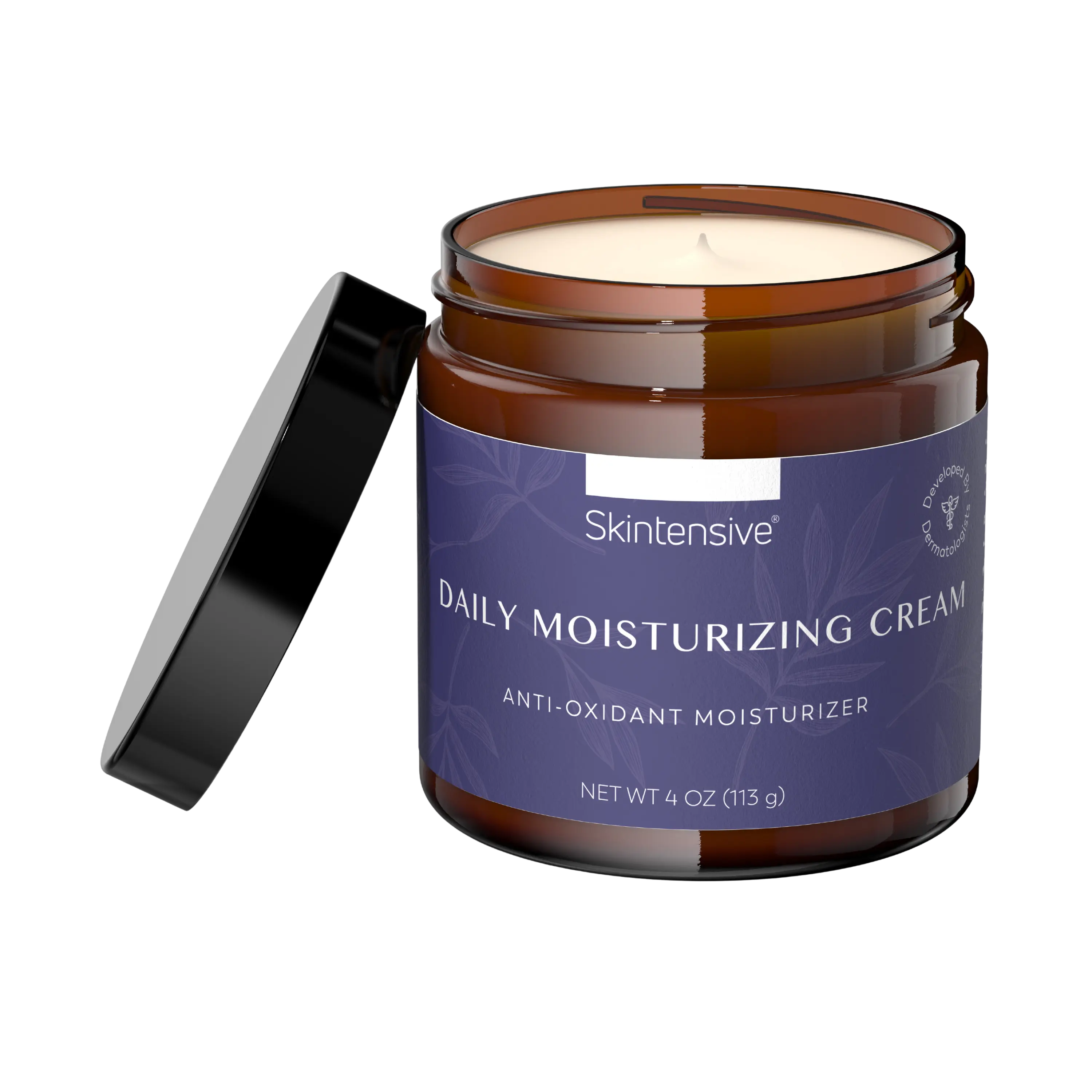Are you tired of dealing with nagging aches and pains that just won't seem to go away? Imagine finding a natural solution that could provide the relief you've been searching for. Enter arnica, a herbal remedy with a long-standing reputation for its pain-relieving properties. From topicals to gel formulations, arnica has become a go-to choice for many seeking a gentle yet effective alternative for pain management.
In our upcoming blog, 'The Benefits of Using Arnica for Pain Relief: Explained,' we delve into the modern uses of arnica cream and unravel its efficacy in alleviating discomfort. Whether you're familiar with the herb's potential or curious about its applications, we've got you covered. Discover how arnica, with its bio-active components, could be the game-changer you've been looking for in your pain relief journey. Stay tuned to explore the wonders of this small yet powerful herb and its role in providing natural pain relief.
LEARN MORE ABOUT SKINTENSIVE BRUISE CREAM, THE LEADING ARNICA CREAM HERE
Introduction to Arnica and its Uses
Arnica, a perennial plant from the Asteraceae family, is known for its various medicinal properties and is widely used in both Western and Eastern medicinal remedies. Derived from the Arnica montana or Arnica chamissonis species, arnica boasts a long history of therapeutic use. It contains bioactive components such as sesquiterpene lactones, flavonoids, and essential oils that contribute to its healing properties.
In modern medicine, arnica is primarily used topically as a cream or gel for pain relief, reducing inflammation, and healing bruises. Its active ingredients help stimulate blood circulation, relieve muscle soreness, and minimize swelling associated with injuries or surgeries.
It is important to note that arnica can cause allergic reactions, and individuals with known sensitivities should exercise caution. Culinary use of arnica is not recommended due to the herb's potentially serious side effects from systemic ingestion.
In the following sections, we will delve deeper into the properties, benefits, and potential risks associated with arnica, exploring its efficacy as a natural pain relief option and its broader therapeutic uses.
What is Arnica?
Arnica is an herbaceous plant known for its medicinal properties and has been used for centuries in traditional herbal medicine. The most commonly used species of arnica is Arnica montana, which is native to North America and Europe.
Origin and Components
Arnica contains various bio-active components, including sesquiterpene lactones, flavonoids, and essential oils. These constituents contribute to arnica's potential therapeutic effects, such as reducing inflammation and relieving pain.
Medicinal Properties
Arnica is primarily known for its analgesic and anti-inflammatory properties, making it a popular choice for pain management. Topical arnica preparations, including creams and gels, are widely used to alleviate muscle soreness, bruises, and joint pain.
Safety and Precautions
Despite its medicinal benefits, it is crucial to exercise caution when using arnica. The herb's poisonous nature means that oral consumption should be avoided, as it may cause adverse reactions. Additionally, individuals with allergies to plants in the Asteraceae family should consult a healthcare professional before using arnica.
Usage and Availability
Arnica can be found in various forms, including topical creams, gels, ointments, and homeopathic remedies. It is essential to follow the instructions provided by the arnica manufacturer or healthcare provider to ensure proper usage and avoid any potential side effects.
In conclusion, arnica is a herbaceous plant with remarkable medicinal properties, particularly in pain relief and inflammation reduction. However, it should be used with caution and under the guidance of a healthcare professional, especially for oral consumption. The availability of different forms of arnica products provides individuals with options to choose the most suitable one for their specific needs.
LEARN MORE ABOUT SKINTENSIVE BRUISE CREAM, THE LEADING ARNICA CREAM HERE
How Does Arnica Work?
Arnica is known for its remarkable ability to provide pain relief and reduce inflammation. Understanding how it works can help you make an informed decision about incorporating arnica into your pain management routine.
Reduction of Inflammation
Arnica contains several bioactive components, including helenalin and flavonoids, that possess anti-inflammatory properties. These compounds are believed to inhibit the production of pro-inflammatory molecules, thereby reducing swelling and discomfort associated with inflammation[*1*].
Analgesic Effect
Arnica's pain-relieving properties are thought to be attributed to its ability to inhibit the release of inflammatory mediators and substances involved in pain signaling. By blocking these pathways, arnica can help alleviate pain[*2*].
Enhanced Blood Flow
Topical application of arnica cream can promote blood circulation to the affected area, facilitating the delivery of oxygen and nutrients while improving the removal of metabolic waste products. This increased blood flow aids in the healing process and helps reduce pain and swelling[*3*].
Accelerated Healing
Arnica has been shown to stimulate tissue regeneration, promoting faster healing of bruises, sprains, and other injuries. Its ability to enhance the production of collagen and reduce oxidative stress contribute to its wound-healing properties[*4*].
While arnica has been traditionally used for pain relief and healing purposes, it is essential to note that more research is needed to fully understand its mechanisms of action. It is also important to consult with a healthcare professional before incorporating arnica into your regimen, especially if you have any underlying medical conditions or are taking other medications.
> Arnica's anti-inflammatory and analgesic effects make it a popular choice for natural pain relief.
Forms of Arnica Available
When it comes to pain relief and other benefits, arnica is available in various forms to cater to different needs and preferences. Let's explore the different forms of arnica that you can find on the market:
- Topical Preparations
Arnica is commonly available in the form of creams, gels, ointments, and oils that are applied directly onto the skin. These topical preparations are convenient and easy to use, providing localized pain relief for conditions such as muscle aches, joint pain, and bruises.
Remember, regardless of the form you choose, it is essential to carefully read and follow the instructions provided by the manufacturer or consult a healthcare professional for guidance. Arnica can be a valuable tool in your pain management toolkit when used correctly and safely.
Risks and Side Effects of Arnica
When used properly, arnica can provide effective pain relief and contribute to overall well-being. However, it is important to be aware of the potential risks and side effects associated with its use. Here are some important considerations:
- Allergic Reactions: Some individuals may be allergic to arnica. If you experience symptoms such as itching, redness, or swelling after using arnica, discontinue use and seek medical attention.
- Poisonous Nature: Arnica is a naturally occurring herb, and in its raw form, it can be toxic if ingested. It is crucial to use arnica products only as directed and avoid oral consumption.
- Interaction with Medications: Arnica can interact with certain medications, including blood thinners. Consult with your healthcare provider before using arnica if you are taking any prescription medications.
- Potential Side Effects: Although rare, some individuals may experience side effects such as skin irritation, rash, or bruising after applying arnica topically. If these occur, discontinue use and consult a healthcare professional.
- Pregnancy and Breastfeeding: Pregnant or breastfeeding women should avoid using arnica products without consulting their healthcare provider, as there is limited research on its safety in these situations.
- Children and Pets: Keep arnica products out of reach of children and pets, as they may be more susceptible to its toxic effects if ingested.
Remember, it is always wise to consult with a healthcare professional before incorporating arnica into your pain management routine to ensure it is safe and appropriate for you.
How to Use Arnica Cream for Pain Relief
Arnica cream is a popular topical preparation used for pain relief and reducing inflammation. Whether you're dealing with muscle aches, joint pain, or bruises, arnica cream can provide soothing relief. Follow these instructions to effectively use arnica cream for pain relief:
- Clean and Dry the Affected Area
Ensure that the area where you intend to apply the arnica cream is clean and dry. Gently wash the area with mild soap and water, then pat it dry with a clean towel. This step helps ensure maximum absorption of the cream and prevents the introduction of bacteria.
- Apply a Thin Layer of Arnica Cream
Take a small amount of arnica cream, roughly the size of a pea, and apply it to the affected area. Massage the cream gently into the skin using circular motions until it is fully absorbed. Be sure to cover the entire area with the cream while avoiding open wounds, broken skin, or mucous membranes.
- Repeat Application as Needed
Depending on the severity of your pain or inflammation, you may need to reapply arnica cream multiple times throughout the day. Follow the instructions provided on the product label or consult with a healthcare professional for specific guidance on frequency and dosage.
- Wash Your Hands Thoroughly
After each application of arnica cream, remember to wash your hands thoroughly with soap and water. This step is crucial to prevent accidental transfer of the cream to sensitive areas like the eyes or mouth.
It's important to note that arnica cream is for external use only and should not be ingested. If you experience any adverse reactions, discontinue use and seek medical advice. Consult with a healthcare professional before using arnica cream on children, pregnant women, or individuals with underlying health conditions.
Benefits and Effectiveness of Arnica Cream
Arnica cream has gained popularity as a natural remedy for pain relief, and its benefits and effectiveness have been supported by scientific research and user testimonials. This section explores the various advantages of using arnica cream and highlights its effectiveness in providing pain relief.
Natural Pain Relief
Arnica cream is widely recognized for its analgesic properties, making it an effective option for the management of pain. It works by reducing inflammation and promoting blood flow to the affected area, thereby easing discomfort and promoting healing. Studies have shown that arnica cream can be beneficial in relieving pain associated with conditions such as muscle soreness, joint inflammation, and bruises [^1^].
Anti-Inflammatory Properties
One of the notable benefits of arnica cream is its anti-inflammatory effects. The active compounds found in arnica, such as helenalin and flavonoids, have been found to inhibit inflammatory processes and reduce swelling [^2^]. This makes arnica cream a suitable option for individuals dealing with conditions like arthritis, sprains, and strains.
Speeds Up Recovery
By promoting blood circulation, arnica cream can help expedite the healing process. Improved circulation brings necessary nutrients and oxygen to the affected area, aiding in tissue repair and reducing recovery time. Additionally, arnica cream has been found to limit the formation of bruising and enhance bruise healing when applied immediately after an injury [^3^].
Minimizes Side Effects
Compared to over-the-counter pain medications and prescription drugs, arnica cream offers an alternative with fewer potential adverse side effects[^4^]. It is particularly useful for individuals seeking pain relief without the potential risk profile associated with long-term use of non-steroidal anti-inflammatory agents. However, it's important to follow the recommended dosage and usage instructions to avoid any adverse reactions.
In conclusion, arnica cream provides significant benefits and demonstrates effectiveness in pain relief. Its natural analgesic and anti-inflammatory properties, along with its ability to speed up recovery, make it a favorable choice for individuals seeking a natural approach to managing pain and promoting healing.
References:
[^1^]: Randomized, double-blind, placebo-controlled trial of topical arnica montana for acute neck pain. Jeffrey A. Gagnier et al. The Journal of Bodywork and Movement Therapies, 2006.
[^2^]: The impact of marigold (Calendula officinalis L.) and arnica (Arnica montana L.) on collagen metabolism. Wozniak T, et al. Connective Tissue Research, 2007.
[^3^]: The Effect of Topical Arnica on Muscle Pain. Andrew P. Smith et al. Annals of Emergency Medicine, 2002.
[^4^]: A systematic review of the systemic adverse effects of topical diclofenac. R. Conaghan, et al. European Journal of Clinical Pharmacology, 2012.
Other Uses of Arnica Cream
Arnica cream, known for its pain-relieving properties, has been widely used for various purposes beyond pain relief. Besides its efficacy in reducing pain and inflammation, arnica cream can also be beneficial for bruise healing, reducing inflammation, and relieving symptoms of arthritis.
- Bruise Healing: Applying arnica cream to bruises can help facilitate the healing process. The anti-inflammatory properties of arnica can reduce swelling and discoloration associated with bruises, allowing the skin to recover more quickly.
- Reducing Inflammation: Arnica cream can be effective in reducing inflammation caused by conditions such as sprains and strains. Its natural components help to soothe inflamed tissues and promote healing.
- Relieving Symptoms of Arthritis: Some individuals with arthritis find relief from joint pain and stiffness by using arnica cream topically. The herb's anti-inflammatory properties may help alleviate discomfort and improve mobility.
It is important to note that while arnica cream is generally considered safe, it is essential to follow proper usage guidelines and consult with a healthcare professional if you have any underlying medical conditions or are taking medications. Additionally, it is crucial to avoid using arnica cream on broken skin or open wounds to prevent any potential adverse reactions.
Incorporating arnica cream into your pain management routine may offer a natural and effective solution for addressing various issues such as bruising, inflammation, and arthritis symptoms. Always consult with a healthcare professional before trying any new remedies to ensure they are suitable for your specific needs.
Conclusion
In conclusion, arnica cream holds great potential as a natural and effective pain relief option. Throughout this article, we have explored the various modern uses of arnica cream and its effectiveness in providing pain relief.
Arnica cream works by reducing inflammation and alleviating pain through its bio-active components. It can be used topically for joint pain, bruise healing, and reducing inflammation in general.
It is important to note that while arnica cream is generally considered safe, there are potential risks and side effects associated with its use. It is recommended to follow the instructions provided by the manufacturer and consult with a healthcare professional if you have any concerns or if you are unsure about the suitability of arnica cream for your specific condition.
While arnica cream can be a beneficial addition to your pain management routine, it is always wise to explore other pain relief methods and consult with a healthcare professional for personalized advice. With its potential benefits and fewer negative side effects compared to certain prescription medicines, arnica cream can be a safer alternative for individuals seeking natural pain relief.
Choose arnica cream as a part of your natural pain relief arsenal and experience the potential benefits it can offer. Always remember to use arnica cream as directed and consult with a healthcare professional if needed.
Incorporating arnica cream into your pain management routine may be the right choice for you. Its clear pain-relieving properties and potential benefits make it a good candidate for individuals seeking a natural and effective solution to their pain. As with any herbal therapy, it is important to use arnica cream with a clear understanding of dosing and its potential effects.
While arnica cream may not be suitable for everyone, it can be a good option for those looking for a topical pain relief product. With plenty of research supporting its efficacy and safety, arnica cream has gained popularity as an effective pain reliever. However, it is important to note that individual results may vary, and it's always best to consult with a healthcare professional before starting any new treatment.
In conclusion, arnica cream shows promise as a natural and safe option for pain relief. Its various components have been studied and found to possess pain-relieving and anti-inflammatory properties. While more research is needed, the available evidence suggests that arnica cream can be an effective solution for joint pain, bruise healing, and inflammation.
When integrating arnica cream into your pain management routine, it is essential to follow the recommended guidelines and use it as directed. Consulting with a healthcare professional is always advised, especially if you have any underlying medical conditions or are taking other medications.
Overall, with its potential benefits and fewer negative side effects, arnica cream can be a valuable addition to your natural pain relief toolkit.
Disclaimer:
The content in this article is not medical advice, but rather informational content. As a service to our readers, Skintensive provides access to our library of archived blog content. Please note the date of last review or update on all articles. No content on this site, regardless of date, should ever be used as a substitute for direct medical advice from your doctor or other medical professional.






